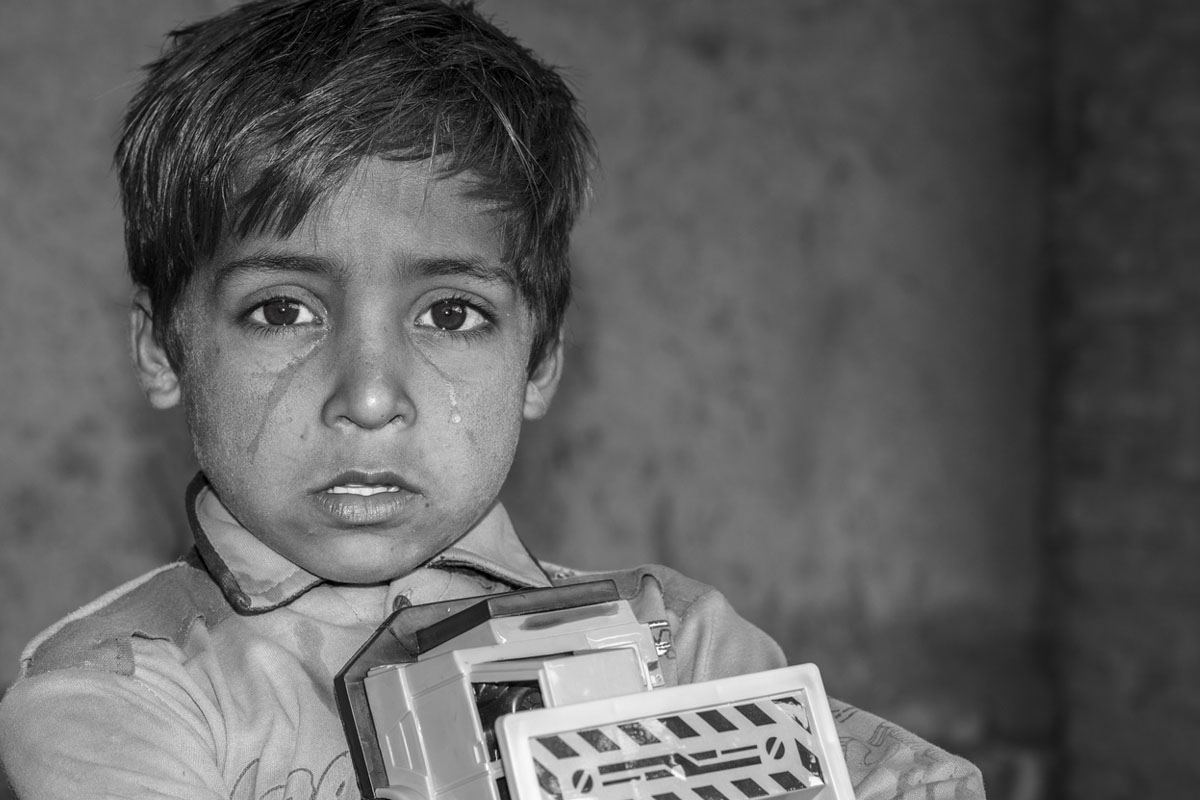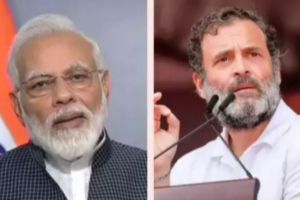Adecidedly hypocritical attitude, which results in a propensity to try to achieve the exact opposite of what we profess, distinguishes Indians from other nationalities. Thus, the Constitution which we have given to ourselves promises equality and secularism ,but successive Government policies have ensured that inequality is at an all-time high and secularism is at an all-time low. Similarly, every politician worth his salt loves to love villages but does nothing for their uplift, making villages of today impossibly dirty, bereft of any civic amenities; places where every community is at war with every other community. Jai Jawan Jai Kisan has been reduced to a populist slogan with both jawans and kisans facing their worst crises since Independence.
The reason for these cruel ironies is not far to seek; words matter more to us than action. Our politicians stay in power by making the right noises at the right time, regardless of their performance while in office. Despite our country’s motto of Satyameva Jayate, our courts take pains to point out that they are courts of law and not of justice ~ meaning thereby that a well drafted case has a far greater chance of success than a deserving one. In fact, this proposition has been explicitly spelt out by the Supreme Court in the infamous Vodafone Case where the Court held that the form of a transaction is more important than its substance. India attained Independence by a non-violent mass movement which was unique in the history of mankind.
People of other countries looked up to us for our adherence to the principles of truth and non-violence. Today, however, violent mob justice has become an everyday occurrence in our country. The cruellest paradox, that of widespread hunger amongst plenty, was highlighted by the Global Hunger Report which ranked India at 102 out of 117 countries, indicating an extensive prevalence of hunger, at a time when the stock of foodgrains in our Central Pool was 741.41 lakh tons consisting of 275.81 lakh tons of rice and 465.60 lakh tons of wheat (Source: Government of India, Press Release dated 2 July 2019). The Green Revolution and subsequent improvements in agricultural practices have made us selfsufficient in food grain, yet a large chunk of our population goes hungry because of extreme poverty.
The short question is: “Can the widespread prevalence of hunger be addressed, within the resources available to us?” The equally short answer is: “Yes, if the Government is serious about it.” The Government of India enacted the National Food Security Act (NFSA) in July, 2013 giving a legal right to 67 per cent of the population to receive highly subsidized food grain. Under the NFSA, 5 kg of foodgrain are allocated every month to every person in the priority households’ category and 35 kg of foodgrain are allocated every month to every family in the Antyodaya Anna Yojana (AAY) at prices of Rs one, Rs two and Rs three per kg for nutri-cereals, wheat and rice respectively. The Act is now being implemented in all States and Union Territories and covers about 81.35 crore persons.
The annual requirement of foodgrain under the National Food Security Act and Other Welfare Schemes is about 610 Lakh Metric Tons ~ much less than what is held by the Government in its godowns. The well-designed National Food Security Act, combines the benefits of three large food safety net programmes ~ the Targeted Public Distribution System (TPDS) providing 80 crore people with subsidized foodgrain; the Midday Meal Scheme, a school meal programme targeting children aged 6-14 years providing meals to more than 12 crore children every day; and Integrated Child Development Services (ICDS), an integrated package of health, nutrition (including supplementary food) and education services for more than 10 crore children up to 6 years of age and providing nutrition support to pregnant and lactating women.
Additionally, we have the National Nutrition Strategy and the National Nutrition Mission to address the multi-dimensional nature of food and nutrition insecurity in view of inequalities related to gender, age, disability, income, caste and region. Then, we have programmes such as Pradhan Mantri Matritva Vandana Yojana, a maternity benefit scheme, and Annapoorna, a nutrition programme for the elderly, to provide support at critical stages of people’s lives. Moreover, international organisations like the World Food Programme, the Food and Agriculture Organization of the United Nations (FAO), the International Fund for Agricultural Development (IFAD), the United Nations Children’s Fund (UNICEF) and World Health Organization (WHO) are collaborating with the Government of India to provide food security, nutrition and livelihood to everyone.
If what is provided in official documents had been implemented sincerely and honestly then we would have achieved the UN Sustainable Development Goal 2030 of ending hunger, long ago. Sadly, the situation on the ground is entirely different. Food is available in the market, but poverty limits access to food for a large chunk of our population. Poor rural households spend more than 60 per cent of their incomes on food but cannot afford pulses, vegetables, milk and fruit. In some States, such as Assam, Bihar, Chhattisgarh, Madhya Pradesh, Odisha, Jharkhand and Uttar Pradesh, more than 30 per cent of the population lives below the calorie-based poverty line.
The prevalence of undernutrition is high, with 38.4 per cent of children under 5 stunted and 21 per cent wasted i.e. at “very high” and “emergency” levels, by WHO standards. On the other hand, highlighting the inequality in our society, almost a fifth of our population suffers from obesity. The seriousness of the Government in implementing the National Food Security Act, can be gauged from the fact that the NFSA laid down a deadline of one year for implementation of the Act but the CAG has reported that only 51 per cent of the eligible beneficiaries had been identified by 2015. The CAG Report further states that except Chhattisgarh, Delhi and Jharkhand, other states had simply re-stamped old ration cards as being NFSA compliant, without carrying out a fresh process of identification. In October 2017, while considering a PIL filed by the NGO Swaraj Abhiyan the Supreme Court observed that “This compliance with the NFS Act is pathetic to say the least.
It is a pity that legislation enacted by Parliament for the benefit of people should be kept on the backburner by some of the State Governments before us.” Food rights activists protested against 45 hunger deaths in 2018, demanding proper implementation of the National Food Security Act. The activists alleged that most of these people died as they were denied their rightful food under the Act due to failure of biometric identification ~ Aadhaar. Wholehearted efforts are required to end hunger and poverty in our country. The National Food Security Act has to be implemented in a way that the most vulnerable people are able to meet their minimum food and nutrition needs throughout the year and people at high risk of malnutrition, especially women, children and adolescent girls, have access to improved nutrition.
This could only happen if accountability of public servants is enforced; every year more than two-third of the Union Budget (Rs 12 lakh crore in the current year) is spent on social security and hunger alleviation schemes but without any satisfactory outcome. Currently, the Government procures grains at a high cost from farmers, a large part of which rots away due to lack of storage facilities. This charade could be replaced by a well thought out income transfer scheme, which would prevent wastage of foodgrain, save a lot of money and ensure supply of edible foodstuff to the poor. Agriculture, which provides employment to 45 per cent of our population, has to be supported vigorously by the Government.
Most farmers are desperately poor because 67 per cent of farm holdings are less than 1 hectare, and nearly 60 per cent of India’s total cultivated area is rainfed. Incentives for pooling of land, creating awareness about improved agricultural practices, integration of farmers into markets, better access to credit and agricultural inputs, rural roads, better marketing and storage facilities are some of the measures that have to be taken urgently. Unemployment is now at an all-time high, manufacturing is stagnant, companies are flocking to IBC and exports are declining despite the Government’s resolve to kick-start the economy by increasing exports. We can begin by re-thinking the regime of high and all-pervasive GST and VAT, which has made our manufacturing sector unviable and which has promoted inequality.
Proper employment opportunities, which a robust manufacturing sector can provide, would go a long way towards mitigating poverty and hunger. More attention should be given to environmental issues. As a result of excessive deforestation, soil erosion and unsustainable agricultural practices such as overuse of chemical fertilizers and pesticides and excessive extraction of groundwater, 29 per cent of our total geographical area is degraded, unfit for agriculture and we are faced with increasing instances of natural disasters like earthquakes, floods, cyclones and drought. A decade ago, we were talking about bequeathing an ecological disaster to our children but it seems that if we persist in our waywardness, an apocalypse may visit us in our lifetime. Our end would not be dramatic but would come about by hunger and disease, as TS Eliot had predicted: “This is the way the world ends, not with a bang, but a whimper.” (The Hollow Men)
(The writer is a retired Principal Chief Commissioner of Income-Tax)











